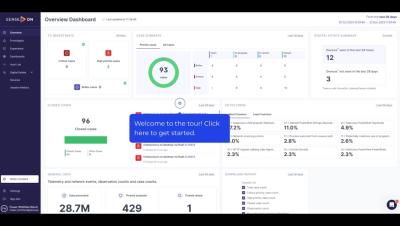Security | Threat Detection | Cyberattacks | DevSecOps | Compliance
SenseOn
SenseOn platform tour
What Goes Into the Cost of a SIEM?
As we’ve covered before, SIEMs are an expensive tool. The average enterprise-level SIEM deployment costs over £15 million a year, and operating a small, 100 to 1000-seat SIEM will still run up bills of over £10k monthly. SIEMs create spiralling costs that eat security budgets. Without a skilled team operating them, they can also make organisations less secure despite receiving more information about their digital estates. But where do these SIEM costs come from?
Why There's No Such Thing As a Low-Cost SIEM
Staff time, log processing, and legacy issues can turn free, open-source or low-cost SIEMs into one of your organisation’s most expensive investments. You’re not alone if you’re baulking at the idea of paying upwards of tens of thousands of pounds for a new or renewed SIEM licence. Many security decision-makers feel the same way. One survey showed that almost half (40%) of existing SIEM users feel like they are overpaying for their SIEM.
How to Defeat MITRE ATT&CK Reconnaissance Techniques
MITRE ATT&CK Reconnaissance (TA0043) techniques section maps out how threat actors gather information about potential targets. Like other ATT&CK tactics (like initial access and lateral movement), reconnaissance provides useful threat intelligence on adversary tactics, techniques, and procedures (TTPs). It is a realistic approximation of what will happen if you become a target.
3 Ways to Reduce SOC Alert Fatigue
Why do 67% of SOC analysts feel like a new job or even a new career sounds like a good idea right now? The reason: alerts. Or, to be more specific, the fact that the time it takes for SOC analysts to deal with security alerts and tickets exceeds the amount of time they have available. The name for this phenomenon is alert fatigue.
How to Apply Zero Trust Architecture (ZTA) In the Real World
How well do you sleep at night? Odds are you would sleep better if you could wake up to Zero Trust Architecture (ZTA). A true ZTA network makes incident response wake-up calls far less likely by shutting down data breaches, ransomware threats or any kind of unauthorised network access. It would also save your organisation at least £500,000 over a four-year period, making your security efforts much easier to advocate for. That’s the dream anyway.
How Can AI Improve Cyber Security?
Right now, organisations using AI cybersecurity tools like SenseOn can improve their cybersecurity in three core ways: But, in the future, one of the most significant benefits of AI will be its ability to protect organisations from….AI. To see why, let’s jump into a time machine.
How to Choose Effective AI Tools for Cyber Security In 2023
If you are searching for ways to actualise benefits from cybersecurity AI tools or want to find out what AI tools will really make a difference in your SOC, you’re not alone. A World Economic Forum survey last year showed that almost half of all security leaders thought AI and machine learning would have the greatest influence on stopping cyber attacks and malware in the next two years. And that was before ChatGPT started an AI frenzy.
Why EDR and NDR Tools Are Not Zero Trust Security Solutions & What to Use Instead
Lock the doors inside your home, hand out keys sparingly, then turn on an alarm in every room. Your house will get a lot more secure. However, it will also become unlivable. Tight security policies, access conditions, and subnetting configurations can take away risk but even mature Zero Trust Architecture (ZTA) environments must balance cybersecurity with usability.











